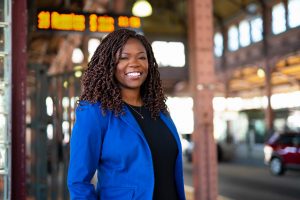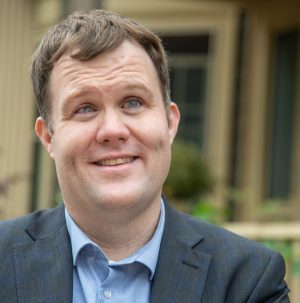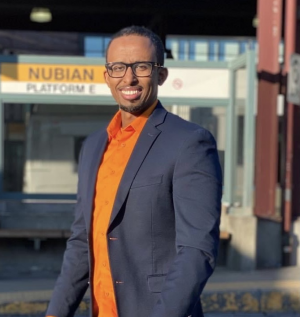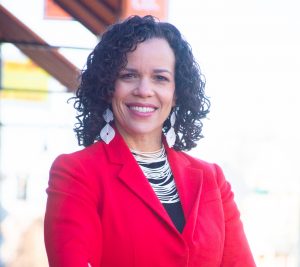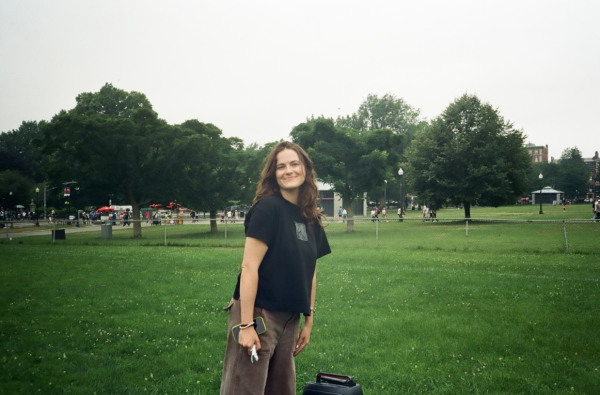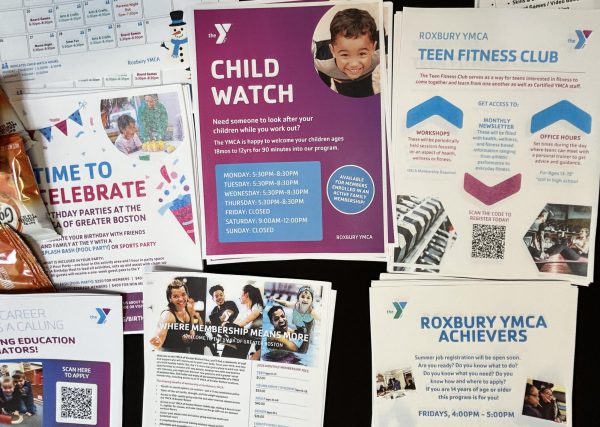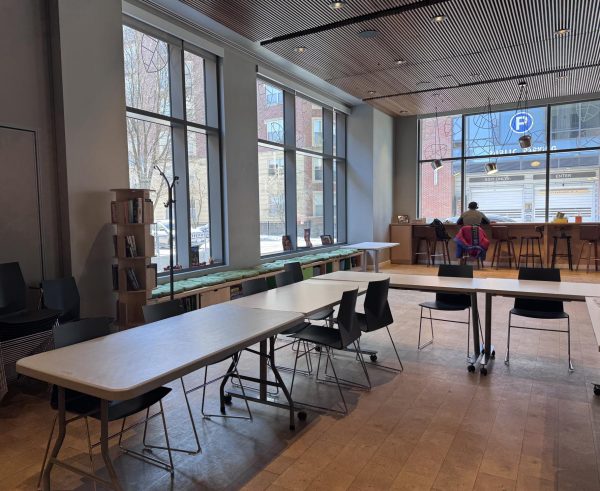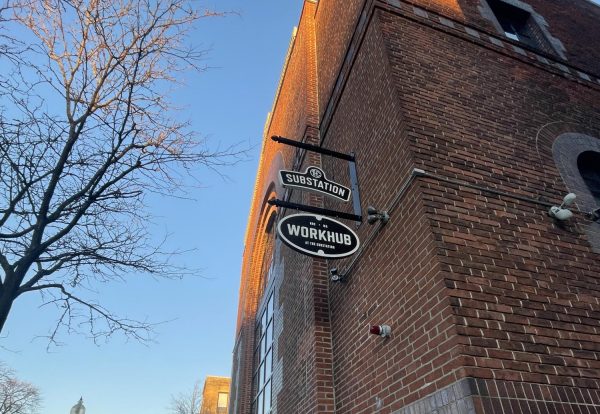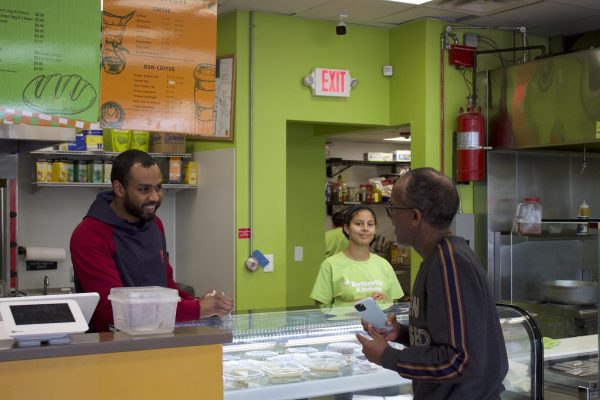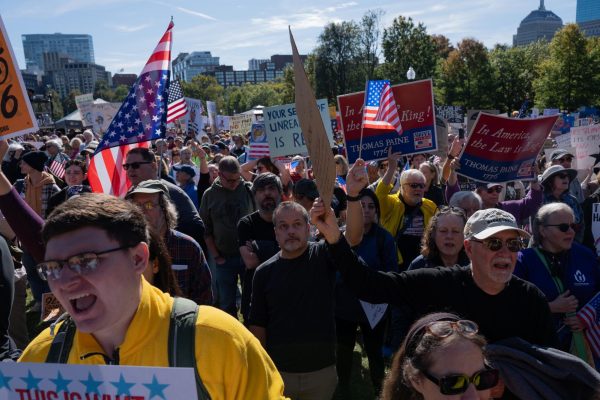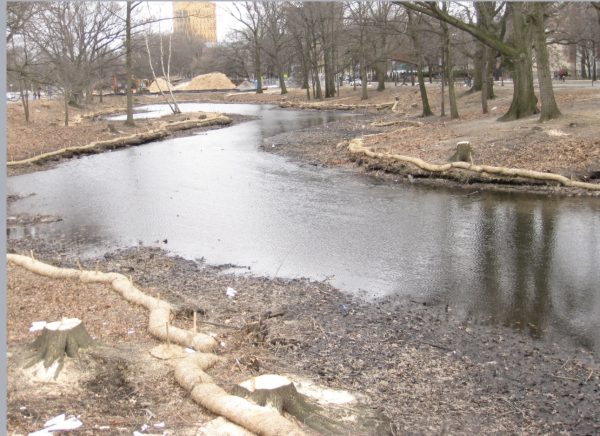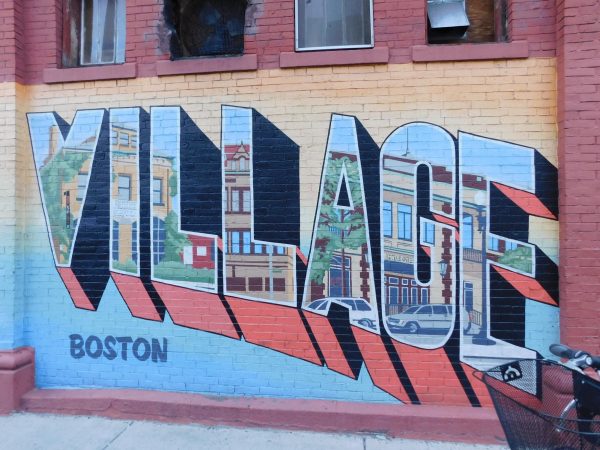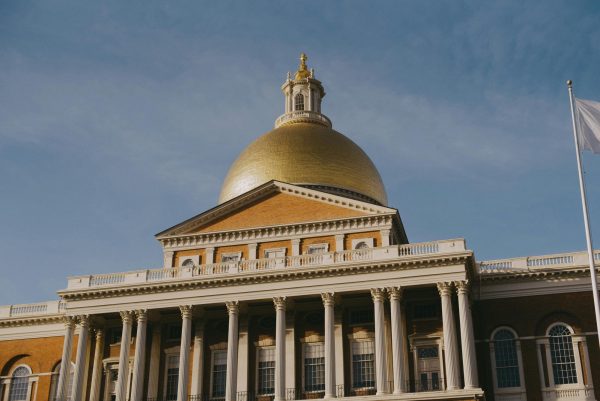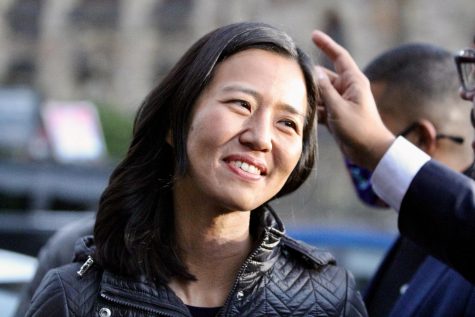Jeneé Osterheldt on telling stories of Black triumph, Black joy and celebration of everyday living
“I need a space where I can wrap my arms around Black people and hug them. I need a space where people of color can be celebrated. I need to celebrate us in our life and not in our death.”
When The Boston Globe’s columnist Jeneé Osterheldt returned from George Floyd’s funeral in 2020, she was exhausted from witnessing time and again how marginalized communities have rallied around each other in suffering and pain. That was when Osterheldt decided that instead, she would tell stories of Black triumph, Black joy and celebration of everyday living.
For the last year, the project A Beautiful Resistance — the space Osterheldt has carved out to tell stories of Black lives and joy — now lives on The Globe’s digital website, in its print newspaper and on Instagram. Readers can enjoy these stories in many forms, through videos, long-form written stories, Q&As, Instagram posts and a playlist. Her team, now including three new videographers of color, has launched a second season of the project just last week.
The Scope spoke with Jeneé Osterheldt about creating A Beautiful Resistance, her careful intention in showing joy and making space for all communities of colors and her advice for young journalists of color.
On the creation of A Beautiful Resistance
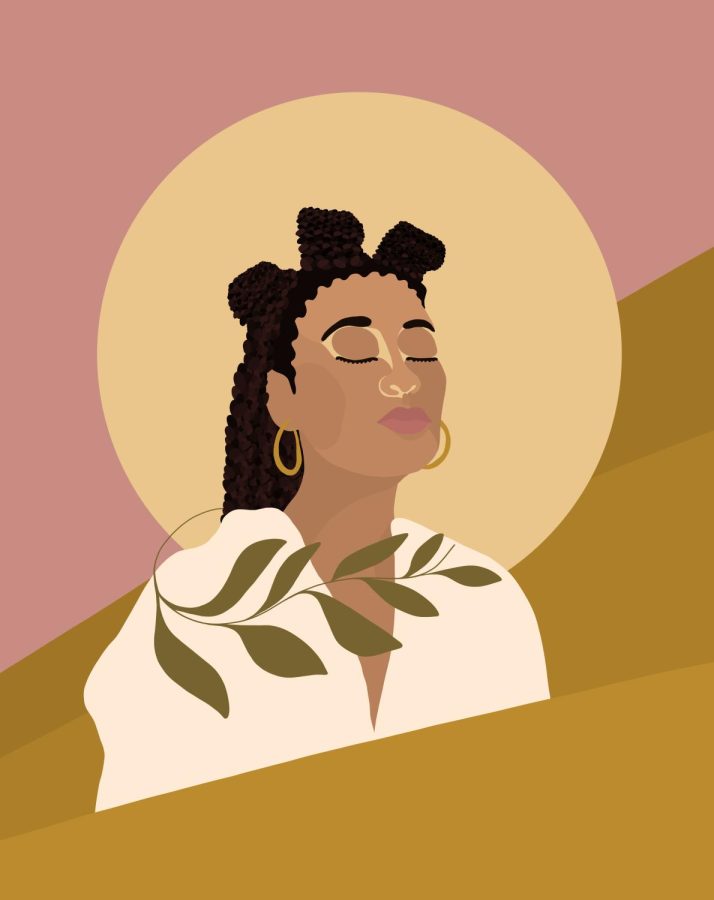
I’ve been a journalist for about 21 years professionally, and it’s not new for me to cover Black culture or to cover people of color. I’m Black everywhere I go. I always bring myself and other people of color with me. But with A Beautiful Resistance, there’s a difference because I’m not breaking the mold here. Other Black journalists, other Latino journalists, other Asian journalists, queer journalists, journalists from marginalized communities have always found ways — even if there are little— to hold space for other folks of color; so I don’t want to act like it’s never been done before.
I think what’s different with A Beautiful Resistance is when I got back from George Floyd’s funeral — which I went to in Minneapolis — I was so depleted emotionally that I just couldn’t stop thinking of the number of stories in my career that I had written on dead Black people, There have just been so many of them. I was tired and very fatigued and exhausted of looking at how we rally around each other — not just Black people, but other marginalized people too — when we are brutalized, when we are suffering, when we are in pain.
And yes, we should rally around each other. We should lift each other up. We should love each other. We should all be fighting for equity and justice period, but if we are only measuring ourselves by our suffering, if we are only telling our stories through either our extreme pain or extreme success — because it’s always like, ‘Look at these athletes, look at these entertainers’—you aren’t telling the multitudes, the truth, the nuance, the whole story of people.
You miss out on the joy and the celebration of everyday living. We talk a lot about Black death, but do we talk about what it means to be alive? Same thing when we look at how we cover trans folks. It was all about their death, but do we talk about what it means to live?
On being intentional about real estate and making space for all communities of color
I wanted not just to do a story or even to do many stories throughout the years the way I have in the past. I wanted an actual home, actual real estate at an institution like The Boston Globe. We have a landing page, we have index pages, we have print real estate, we have videos, we have written stories, we have Q&A. [I asked questions like:] “What does it mean to be intentional about space?” And then “What does it mean as I’m centering Black lives and Black dreams and Black joy to also to make space for other folks of color? How do I infuse them to [the project], and how do I make sure they see themselves in physical space that is on the digital site and in the actual, literal space of print?”
It’s not perfect. I’m not perfect, but I’ve been very intentional every step of the way. It is a lot of work. The Philadelphia Inquirer just created a very similar framework to A Beautiful Resistance that they just launched a month or two ago called Wildest Dreams. They’ve got a team of 10 or 15 people doing what I’m doing kind of alone … I’m just happy to see more work like it, and I hope that more work like it exists. I hope next year when I’m doing interviews like this, I could say and now three media organizations are going into this community and hiring videographers and photographers of color from the community to tell their stories. A year has been hard. It’s been beautiful. It’s been enraging. It’s been gorgeous. It’s been joyous. It’s been kind of all of the things because the truth is, there is a duality. You don’t even understand joy if you haven’t gone through pain.
On what’s new in the second season
The second season of A Beautiful Resistance just launched yesterday [Oct. 31], and what I did differently is that the first season was just me and a videographer, and that’s it. I picked every subject. I did all the questions. I set up the shoot times. [The videographer] would turn in beautiful drafts, and then we would go through and edit together, like, ‘Here’s how I want the cold open to look.’
The Globe doesn’t have many Black employees on the visual staff, so I was working with a non-Black person, a non person of color period, and [she is] incredibly talented, incredibly aligned with the mission, definitely an ally. But going into the second season, I told them, ‘Hey, it is very imperative that we have people of color behind the camera working with me, and I want them to be people here in New England.’
Initially, I was given the budget to hire one person to do exactly what I did last season. I interviewed a couple of people and decided I wanted all three. So, I took that budget and just split it three ways, and they each got a couple of episodes. They’re still paid more than their rate; they’re still taken care of and I’ve made sure they’ve gotten other opportunities.
But that to me is so important because … it matters that there are Black people and people of color behind the camera. It matters that they’re from here in New England and that they have agency and storytelling, that they have exposure, that they are part of this team, that they each bring their unique visual beauty to the story. I love that, and I think that’s just part of our mission to continue — not trying to be the voice for the voiceless because I don’t believe in voicelessness.
I am so proud of our videography team, our three Beautiful Resistance fellows. I love watching them work. It feels different to have them behind the camera. There’s a different level of language that we’re speaking without even speaking that I’ve never had before in my entire career. Like not just this past year, but in 21 years, I’ve never been able to say everyone on my team is a person of color or everyone on my team is Black.
I’ve never even had a Black person sit directly next to me in any office that I’ve worked in all these years; so it just means a lot, not just to the work and to our audience but to me. I feel like it’s given me something that was maybe a little lost before and in being able to do little things throughout the year — we did the Black History Month project with Reebok and I did the AAPI [Asian American and Pacific Islander] History.
I couldn’t do Hispanic Heritage Month because it was during the editing process of A Beautiful Resistance, and I just have so many hands. I did some Instagram posts to make sure that we were covered there, but today is Día de Los Muertos [Nov. 1], so I made sure that we had a showing for Día de Los Muertos today and tomorrow because I don’t want anyone to feel I have forgotten them.
On the name A Beautiful Resistance
The idea for A Beautiful Resistance was very spiritual, and it was kind of instantaneous. To be honest, I wish I had some story to tell about how it took this really long time. But I went to George Floyd’s funeral, and I was in such pain I wrote three stories in 72 hours that I had to file from Minneapolis.
I came back, and I just told my editor, ‘I need a space. I need a space where I can wrap my arms around Black people and hug them. I need a space where people of color can be celebrated. I need to celebrate us in our life and not in our death.’ I was like, ‘It’s gonna be called A Beautiful Resistance.’ And that was inspired by a song my mommy listened to by Rob Base and DJ E-Z Rock when I was little called Joy and Pain. There’s beauty and a struggle, the beautiful struggle and all those things, and I thought, you know, A Beautiful Resistance. That’s what this is. That’s what we’re gonna call it.
And I told [my editor], ‘I don’t want this just to be a series of stories. I want a landing page.’ I went to one of my friends who is no longer at The Globe, and she’s very good at strategies. And I said, ‘Here’s what I want to do.’ We started brainstorming. I went to my ally, Caitlin [Healy], who was the videographer for season one, and I said, ‘Hey, is this something you would want to do with me?’ Because I knew that I wasn’t going to get the budget at that time to get someone outside of the company.
She’s such a great ally, and she was like, ‘Yeah, I’m on board.’ So we just made it happen. I reached out to Paula Champagne, the Black artist that did all the gorgeous illustrations, and we just started from the gate — being very intentional about what it was going to be and the possibilities of what it could grow into.
On the psychological toll of online trolls and why she picked Instagram as the social platform for A Beautiful Resistance
I have used Twitter for many years, and I’m still on Twitter, but I have slowed down my Twitter use particularly right around before COVID hit. It’s because, as much as I love Twitter as [the platform] has given us many things and a lot of them are good, but as a Black woman columnist, I have dealt with a lot of hate, death threats — all kinds of things. I’m in a place now — particularly because of the isolation we endured in the first wave of the pandemic — that if I can control my negative interactions, I try to.
Instagram has always been the one place where I actually rarely deal with trolls, for the most part. Rarely do people troll me on Instagram. So, when I was thinking about A Beautiful Resistance, I was like, ‘Where can we amplify Black people, amplify AAPI people and Hispanic people, every marginalized identity? Where can we do that and have the least amount of negativity involved? Where can we do that and be very strong?’
I thought about Frederick Douglass and how Frederick Douglass was so intentional about using pictures to push progress. I mean, there’s a reason why he’s the most photographed man. It’s because he understood the value of agency and seeing yourself how you want to be seen.
It’s why whenever I ask someone for their Beautiful Resistance [story], I always say, ‘Send me the picture of your choosing and just shout out to the photographer because I like to give photographers credit.’ It means something for people to see themselves how they want to be seen and set to define themselves how they want to define themselves, and Instagram is such a beautiful way [to do so].
Everyone is like, ‘Oh, Instagram is gonna go away how Facebook went away,’ And I’m like, ‘I hope it doesn’t,’ because Instagram is one of the few platforms where I feel like we really have the capability and capacity to tell our stories visually and through text. It’s engaging and quick, but it’s also very rarely a space where there’s lots of hate and just the general fuckery. All the other social media platforms have way more fuckery than Instagram.
It’s not just social media. I got hate mail in 2001 when the only thing that existed was really Facebook. I got emails and handwritten letters. People get so mad. They actually write handwritten [letters] to troll. Older people will literally write. The first piece of hate mail I got was a handwritten letter to the Kansas City Star, and it was super racist, so that’s always existed. It’s just that Twitter has made it so much worse. It’s just so instant. There are people who create bots that’ll just attack certain phrases, a certain language and sometimes, in certain cases, certain people. So yeah, it’s really about protecting our collective peace.
On being intentional about accessibility
I don’t want to miss out on this point. It was about access. You know, you can post videos on Twitter, but they can only be x amount of minutes unless it’s a YouTube link. But with Instagram, there was IGTV at the time, so I could upload a whole 15-minute episode. If you don’t have a Globe subscription, you can watch the film on Instagram. And of course I want people to read the long-form story. I want them to engage with the Q&A and with the other content that’s on the website, but if they can’t, I want them to at least feel engaged in part of the community.
During Black History Month, we actually took down the paywall on A Beautiful Resistance landing site so that anyone could access it for the whole month, and I intend to do that again this Black History Month. We also ran the [promotion campaign] $1 for six months [digital subscription to the Globe] every time a story ran with A Beautiful Resistance so that people could at least sign on to get the whole project.
Advocacy work for A Beautiful Resistance
I’m a columnist, so it’s a little different for me. As a columnist— even though I’m a Black woman— as a columnist, I recognize that I have a certain level of privilege. I opine. I am not forced into any type of neutral position in the face of adversity. So, because of that, it puts me in a unique position of being in control of my real estate as a columnist.
Every week, I decide what I’m going to write. My editor and I do brainstorm and sometimes something will happen, and he’ll be like, ‘I would love to get your voice on this.’ I think all columnists and editorials just have a level of power and privilege that I think we all should acknowledge and do our best to help the journalists in the room do the stories that they want to do when we can.
On what’s to come for A Beautiful Resistance
The first season had six episodes and six written stories. Each episode is a mixtape. So with each episode, you get the video, a long-form written story that is on a broader topic outside of the video, a Q&A, the Instagram post and then a playlist.
For season two, I just made one playlist that’s for the whole season instead of every episode, and everyone including the subjects and the directors contributed songs that inspired them during their episodes.
The Q&A and Instagram are typically where I try to infuse other voices of color and make sure that they have space. This season we have eight episodes, so we grew a little bit. I really would like to continue doing new things. We’re going to do a special event for the Transgender Day of Remembrance. We’re going to probably do a virtual screening.
We’re going to try to do some events, some photo pop-ups where people could come and have their picture taken or share on video with their Beautiful Resistances, so those are ways in which we’re growing.
There’s a chance we might evolve into a podcast and have that be for when we’re not in season.
I’m not done dreaming. That’s the beautiful thing about giving yourself permission to do things you haven’t seen done. Because when you think that you can only fly so high, you don’t even imagine flying further because you’re like, ‘I just want to fly as high as that.’ Because that’s what you’ve only ever seen.
So now that I’ve been able to create this space, and I know that it can do well and it actually creates impact for the people I want to reach and people feel seen. Now, I’m like, ‘What other ways can we stretch and give to the community? How else can we be in community with the community?’ Everyone’s so obsessed with covering the community. Maybe if we were in community with all of these communities, the coverage would be so much more honest and impactful.



